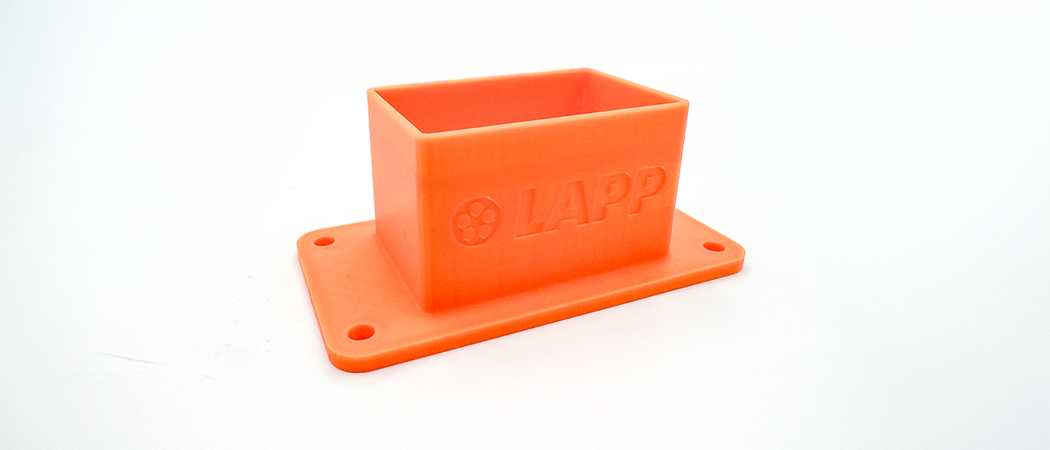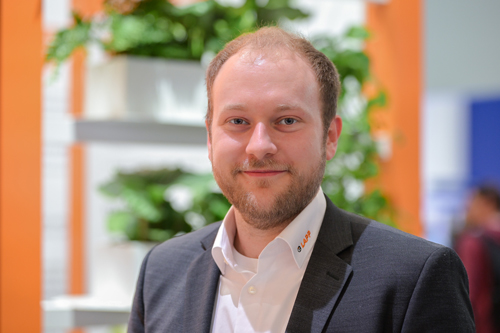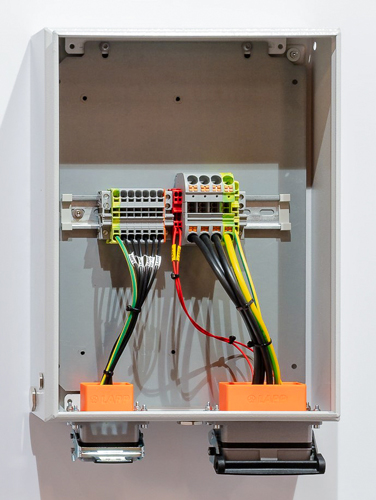
The roots of 3D printing date back to the early 1980s. In 1983, US engineer Chuck Hull developed the stereolithography (SLA) process and filed a patent for it in 1986. This marked the birth of the first additive manufacturing process: liquid resin was cured layer by layer using a UV laser, creating a physical object. Other processes soon followed, such as fused deposition modeling (FDM), which is widely used today, and selective laser sintering (SLS). They are all based on the same principle: instead of removing material, it is added layer by layer – in line with the principle of maximum resource efficiency.
From prototype to series production

For a long time, 3D printing was mainly used in product development – ideal for the rapid implementation of prototypes, test housings, or design studies. However, with increasing material diversity and ever more powerful printers, the technology began to make the leap into series production. Today, industries ranging from automotive to medical technology use additive processes for complex components that would not be so easy to manufacture using conventional methods. “This makes the process very flexible and efficient,” says Dr. Philipp Baron from LAPP. ”In principle, 3D printing allows decentralized, demand-driven production directly on site – without long delivery times or tooling costs, which can be a real competitive advantage, especially in times of geopolitical uncertainty and volatile markets.” The global market leader for integrated solutions in the field of cable and connection technology is increasingly relying on this innovative printing process, which has been used less in the cable sector to date, but all the more in the field of connectors.
Innovation driver for customer-oriented development
In recent years, LAPP has invested in this area, also known under the brand name EPIC®, in new development processes, new suppliers, better cooperation with interfaces, and in machinery and expertise in the field of additive manufacturing. With the 3D printing process, customer requirements can be implemented even faster and more cost-efficiently. For some time now, the Stuttgart site has therefore been home to a state-of-the-art facility that can be used for both prototype and series production. Dr. Philipp Baron, responsible for 3D printing in pre-development, and Stevens Sehic, team leader for connector development, provide the necessary expertise alongside the printing machines.
“We use 3D printing to continuously produce prototypes that we use internally to realize ideas and design drafts within a very short time,” explains Dr. Philipp Baron. ”This allows us to test many parts efficiently and use them for research or, for example, to check their pluggability.” The process also makes it easy to take special customer requests into account or simply test whether a component fits comfortably in the hand. If a newly developed connector passes all the tests that can be carried out on the 3D-printed prototype, all innovations can be integrated into series production.
Fast solutions, real competitive advantages

For example, a customer described a problem with moisture in the control cabinets they produced. Even built-in dehumidifiers did not help with the condensation caused by temperature differences on the inner walls of the cabinets. Sooner or later, moisture accumulated inside the control cabinet and then ran toward the connectors inserted through the floor. The result: impending malfunctions and possible short circuits. The customer had previously remedied the problem with a laser-cut stainless steel component that shielded the connector from the liquid – a complex and expensive solution that did not offer 100% protection.
A challenge for LAPP. The goal: a simple solution that keeps moisture away from the connectors and is compatible with standard components. The team of experts at LAPP quickly developed a concept and carried out initial pressure tests.
“Just three days later, the first prototypes ready for series production were completed in LAPP Orange – technically feasible for series production with a UL-certified material.”
The customer is thrilled with LAPP’s hands-on mentality and rapid solution finding – a great opportunity for the manufacturer of connection solutions.
Numerous connectors and components have already been created for LAPP’s EPIC® series using this method and additive manufacturing. These include the EPIC® H-B 16, which features an improved rectangular connector design, the EPIC® H-Q TS M25, a proprietary development from LAPP featuring a new type of housing with internal threads for cable glands and a compact design, the EPIC® MCS-HC 2, a module insert for a modular connector system, and the EPIC® POWER M23, a robust contact carrier made of UL-certified material with a filigree structure.
Technology with development potential
Die Beispiele zeigen: Additive Fertigung ist mehr als nur eine technische Spielerei – sie verändert, wie in der Industrie gedacht, entwickelt und produziert wird. Besonders dort, wo individuelle Kundenanforderungen schnell und flexibel umgesetzt werden müssen, spielt der 3D-Druck seine Stärken aus. Doch trotz aller Vorteile sind auch Herausforderungen nicht von der Hand zu weisen: Die Standardisierung von Materialien, Zertifizierungsprozesse sowie die Integration in bestehende Produktionslinien sind komplex. Dennoch: Die Technologie entwickelt sich rasant weiter, und mit ihr wächst das Einsatzspektrum – auch bei LAPP. Für Unternehmen wie den globalen Anbieter von Verbindungslösungen aus Stuttgart bietet die Additive Fertigung damit nicht nur Antworten auf heutige Fragen – sondern auch einen Weg, um den Herausforderungen von morgen kreativ zu begegnen.
